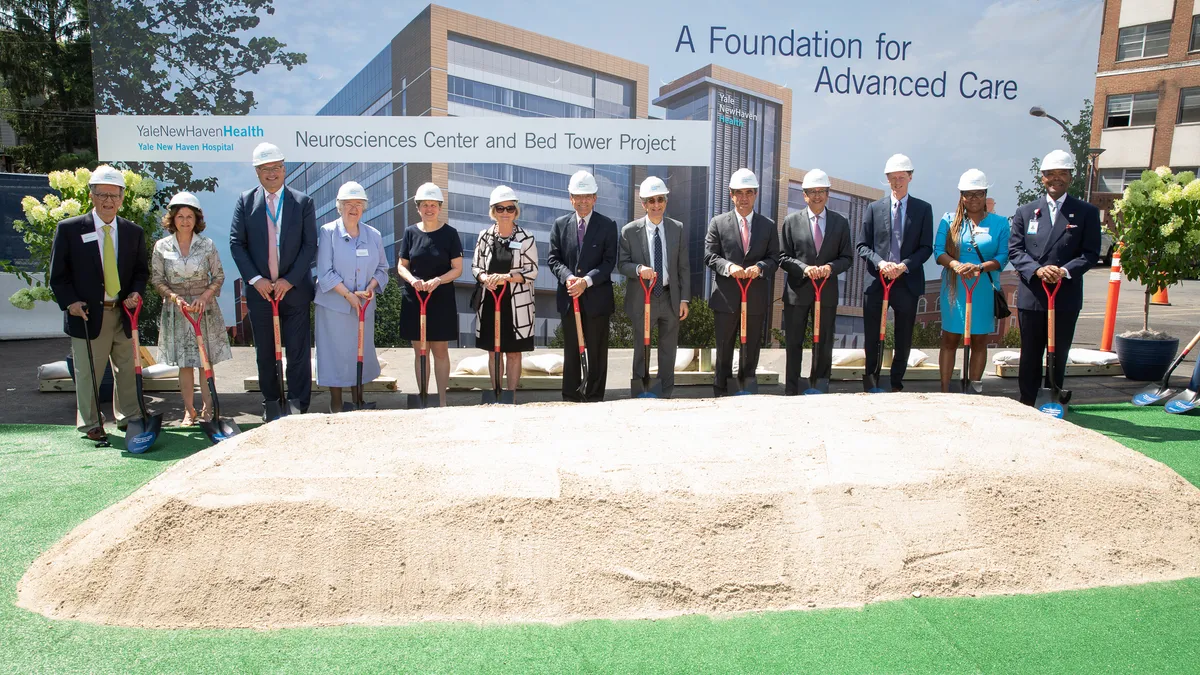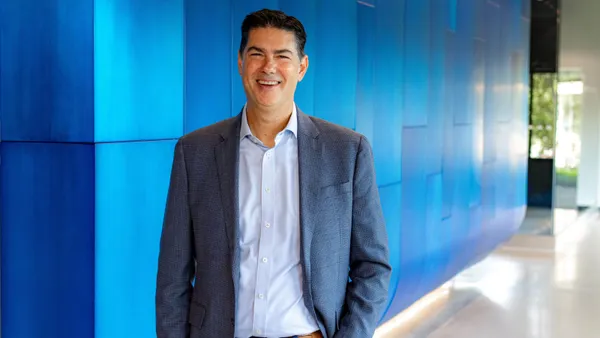Dive Brief:
- Yale New Haven Hospital broke ground Aug. 31 on a new $838 million neurosciences center, according to a project press release. Turner Construction will serve as the general contractor of the project, according to Mark D’Antonio, media relations coordinator at the hospital.
- The 505,000-square-foot project will include two new patient facilities and 201 inpatient beds. It will be the largest project of its kind in Connecticut history, according to the release.
- The project will create hundreds of construction jobs as well as new positions at Yale New Haven Hospital, said Justin Elicker, mayor of New Haven, Connecticut.
Dive Insight:
Healthcare construction remains strong despite surging costs, with spending in the sector near all-time highs.
The Yale New Haven hospital was officially announced on April 29, 2019, but its start was delayed because of the COVID-19 pandemic.
Costs for prevalent materials in hospital projects, like concrete and structural steel, have “seen significant increases over what they cost over the last 24 months,” said Chris Dunn, a health care construction lawyer at Epstein Becker Green.
But that has not stopped massive healthcare projects, like the Yale New Haven hospital, from moving forward.
The new center will consist of two patient bed towers, the Sherman tower adjacent to Sherman Avenue and McGivney tower built atop of the existing McGivney Center.
Both towers will share a common podium that will house the new entrance and the main lobby on the first floor, neurosurgery and radiology spaces on the second floor and caregiver spaces and the mechanical equipment room on the third floor.
The hospital will provide enhanced access to state-of-the-art care from movement disorders to neuro-regeneration for patients, according to the release.
“When there’s a downturn, and objectively we’re trending that way, there’s a fair amount of attention that design professionals and contractors give towards the healthcare sector because it’s durable,” said Dunn. “It usually stays pretty much in demand, even in down cycles.”















